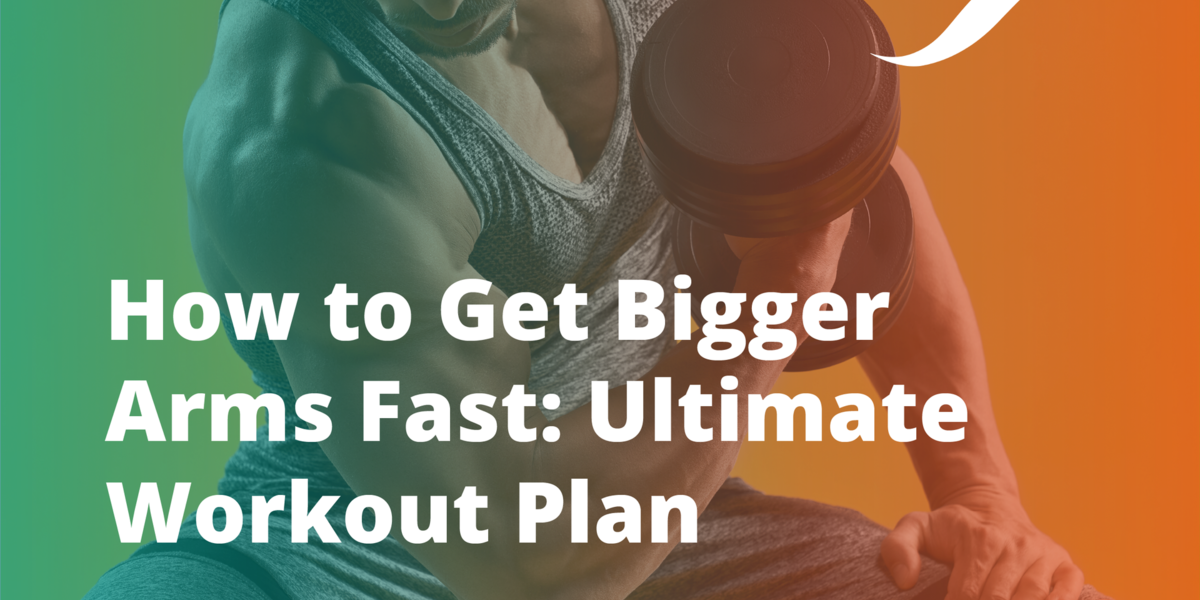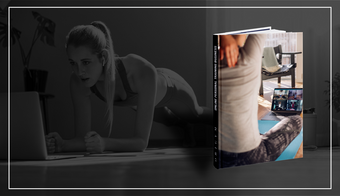How To Get Bigger Arms Fast: Ultimate Workout Plan (2024)
Learning how to get bigger arms is one of the most popular starting points for those starting out with weight training, especially since it’s something that can be achieved relatively quickly with the right advice!
The issue here is that there are many sources out there that simply state their own opinions on getting bigger arms without having the relevant qualifications or experience to do so.
We’re not saying that their methods are false, or that they won’t work for you, but what we ARE saying is that it’s better to hear a completely accurate and actionable approach from a fully qualified fitness expert rather than an amateur fitness blogger.
That way, you can rest assured that you’re getting the best information available in the industry, and that you’ll be able to get bigger arms fast.
It’s also likely to save you a lot of time and effort if you get it right the first time, and prevent you from losing motivation and giving up altogether!
Interested in turning your passion into a full-time fitness career? Why not check out our L3 PT Diploma or download our latest prospectus before you carry on reading!
Contents:
- The science behind success
- How long does it take to get bigger arms?
- Bigger arms workout plan
- Sets & reps explained
- How to get bigger arms at home
Start a Successful Online PT Business From Home in 9 Weeks!
Get started by downloading our video guide
How to Get Bigger Arms: The Science Behind Success
While we’re not going to bore you with the in-depth details of protein synthesis and the science behind getting bigger arms, we're going to give you the basic formula for success when it comes to your nutrition and the way that you workout.
If you already know your stuff, feel free to skip to our bigger arm workout plan below!
However, if you’re not familiar with the basic principles of nutrition and how it relates to muscle growth, as well as how to optimise your workouts for muscle growth rather than endurance, then you should probably stick around.
#1 - Diet for Bigger Arms (nutrition plays a HUGE part!)

This is the truth, no matter what you’ve been led to believe in the past.
As Charles P. Lambert (PhD) et al state in their study on the importance of macronutrients in bodybuilding:
Muscle is primarily protein and water. In order to maintain muscle mass, adequate dietary protein intake is required. The rates of muscle protein degradation and synthesis increase in response to high-intensity resistance exercise, with a greater increase in the rate of synthesis.
Taking this information into account, it’s clear that optimizing your protein intake alongside a well-structured workout plan (like the one we have below) is one of the most important things to get right when it comes to building bigger arms.
In fact, your nutrition will be responsible for around 70-80% of your overall progress, and without practising good nutrition or getting your protein intake right, you’ve already fallen at the first hurdle.
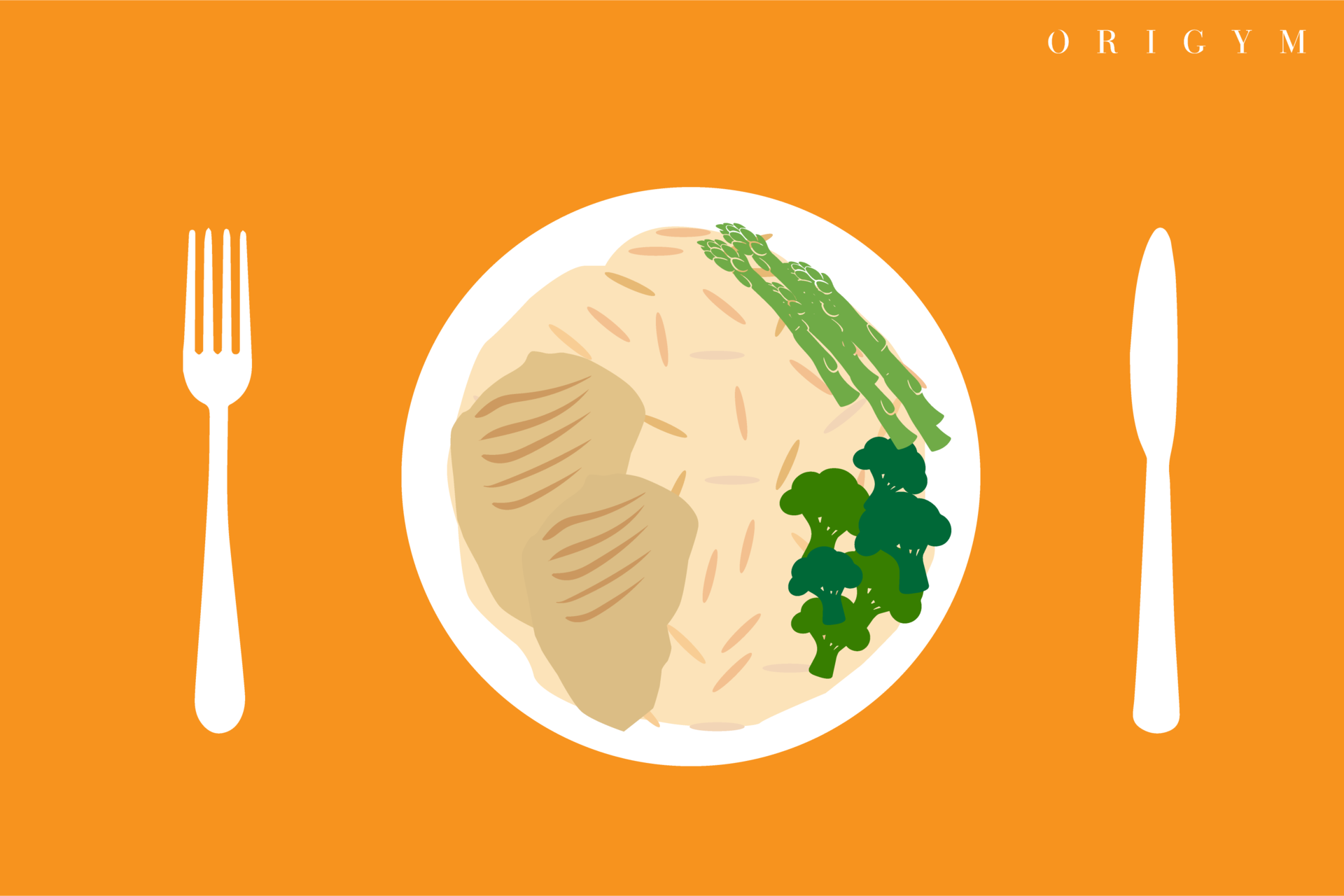
You’ll be glad to know that this doesn’t mean having to eat just rice, veg, and chicken for every meal. There are plenty of options when it comes to upping your protein intake, as well as getting a good range of healthy fats, carbs, and micronutrients.
This also means that you don’t have to be put off by hearing the word ‘protein’ if you have a vegan or vegetarian diet. In their study titled ‘what’s the best source of protein for building muscle–meat or plants?’, O. Witard et al write:
There are exceptions such as maize protein, which boasts a 12% leucine content, and quinoa, which has a full complement of all essential amino acids. So it may be that certain plant proteins are just as effective as so-called “higher-quality” animal proteins.
It’s clear here that despite the popular belief that animal protein is the only way to go when it comes to building muscle, you can still use vegan & vegetarian sources of protein to pack on the muscle mass if you optimise your diet correctly!
How often should I eat, and what should my portion sizes look like?

Once you’ve figured out the kinds of foods that you’ll be eating for your bigger arms diet plan (you can find these in our PT meal plan article above), it’s important that you optimise when and how you eat them in order to be successful in gaining muscle mass.
In terms of portion size, you can go for 3 larger meals per day if this is how you’re used to eating, with a few protein-packed snacks in-between meals. If you’re eating less often then it only makes sense for your portion sizes to be bigger.
On the other hand, having 5-6 smaller meals per day is thought to be an even better way of eating since it keeps your metabolism on its toes throughout the day, and gives you the option to gain a more diverse range of macros and micros within 24 hours.
Some studies show that eating this way can improve protein absorption too, so it may be worth a try!
#2 - Exercise is only effective when it is performed correctly
We’ll get more into this later, but the amount of reps and sets that you complete as well as HOW you complete them is vital to get right.
When reading our workouts to get bigger arms, be sure to watch each of the demonstrations carefully before attempting to perform any of the exercises. It might be a good idea to have them on hand when you’re in the gym too, at least for the first time you attempt any new ones!
For now, the common mistakes to avoid when exercising to get bigger arms are as follows:
- Uncontrolled motions when lifting weights, or ‘swinging’
- Performing reps too quickly without engaging muscles
- Performing as many reps as possible with an ‘easy’ weight
- Training to failure on the first set
- NEVER training to failure (sometimes it’s beneficial!)
- Performing 200+ push-ups each day in hopes of building muscle mass
- Too many cardio sessions
- Not taking enough rest time in-between workouts
- Being too consistent in your workouts (this can cause a plateau)
How Long Does it Take to Get Bigger Arms?
The reason that we’re covering this is that ‘how long does it take?’ is one of the most commonly asked questions when we first sit down with our clients to discuss their goals.
We certainly don’t blame you for wanting to know how long it will take for you to see results, especially since everyone interested in fitness (no matter their current level) has asked this question.
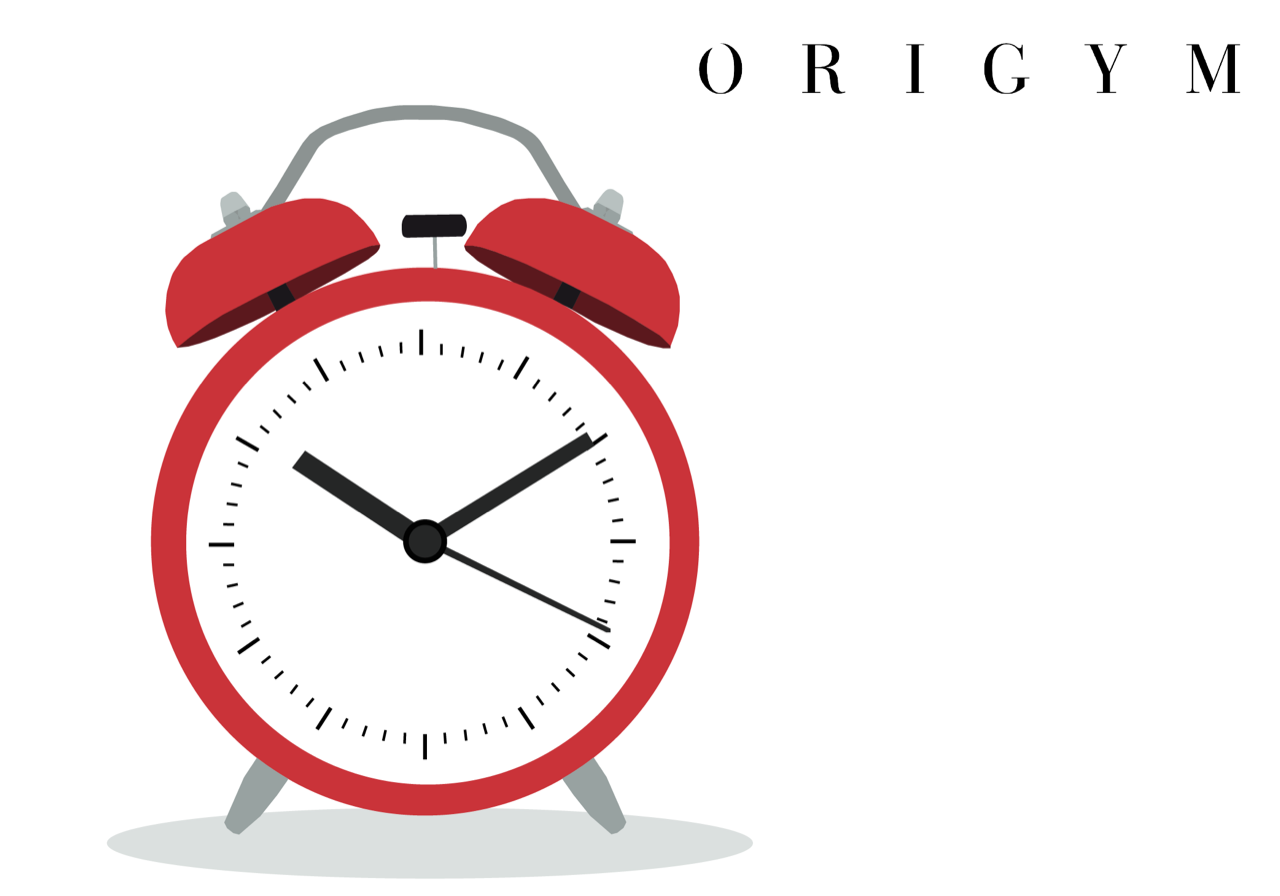
The bad news is that there is no solid answer. This is for a multitude of reasons, the main one being that everyone is different. It’s incredibly difficult to give an accurate answer to something that depends on factors such as:
- An individual’s current state of fitness
- How many workouts they are able to perform per week
- How much effort they put into workouts
- How well they stick to their nutrition plan
- Genetics
While most of these factors are down to the individual, you’ll notice that genetics are not. Some people make faster progress due to their overall body shape and predetermined metabolic rate, but don’t let this put you off!
We don’t have a solid answer for every individual reading this, but we can give a holistic answer to those wondering how long does it take to get bigger arms? by stating what we know to be true for the majority of our clients who listed this as one of their main goals.
Typically, it takes around 6-8 weeks for you to start noticing changes in the appearance of your arms. At around the 12 week mark, this is typically when you can expect to see more significant changes, especially if you didn’t already have a large amount of muscle mass in the area!
NOTE: this statement is based on average results, and truly depends on how committed you are to your new routine. It also heavily depends on the workouts that you complete, and HOW you complete them, but we’ll get to that in a moment!
Ultimate Bigger Arms Workout Plan (The Fastest & Most Effective Method)
Warming Up
For an effective bigger arms workout, it’s best to alternate between the three options below.
However, before you jump straight into your chosen workout, you should complete a warm-up that targets the areas that you will be working on.
There’s no use in completing a cardio warm-up on the treadmill or exercise bike, as this won’t target (and therefore protect) the muscles that you’ll be using during your weight training routine.
You need to complete a dynamic stretching warm-up that gets the blood pumping to your upper-body muscles, as well as activating and stretching them pre-workout to improve your range of motion.
You should start with something like jumping jacks to get your blood pumping, and then swiftly move into focusing solely on the upper-body in this case. An effective warm-up will incorporate movements such as:
- Arm circles
- Resistance band pull-apart
- Resistance band shoulder dislocation
- Resistance band internal and external rotations
There are many more of these dynamic upper-body stretches that you can complete, and we’d definitely suggest putting together the ones that are most relevant for the exercises that you’ll be completing.
In their book ‘Fitness Weight Training’, Thomas R. Baechle (professor and chair of the Department of Exercise Science at Creighton University) and Roger W. Earle (MA) write:
Another type of warm-up involves performing the exercise that you are preparing to do but with a very light load for 8 to 15 repetitions.
This specific (versus general) type of warm-up allows you to get your brain and muscles working in harmony before you tax them with heavier loads. This type of warm-up also gives you the chance to acquire a better feel for which muscles are involved and how to get them more involved in the exercise.
This method of warming up echoes the idea that we put across above, as performing exercises that mirror the ones that you will be completing in the main section of your workout is incredibly beneficial; there isn’t really a superior way of preparing yourself!
NOTE: if you don’t warm-up, you’re likely to injure yourself, especially since you’re working with heavy weights. Make sure that you’re fully prepared before completing a weight training session, or an exercise session of any kind!
COMPOUND EXERCISES
When constructing workouts to get bigger arms, the first exercise type that you should factor in are compound exercises.
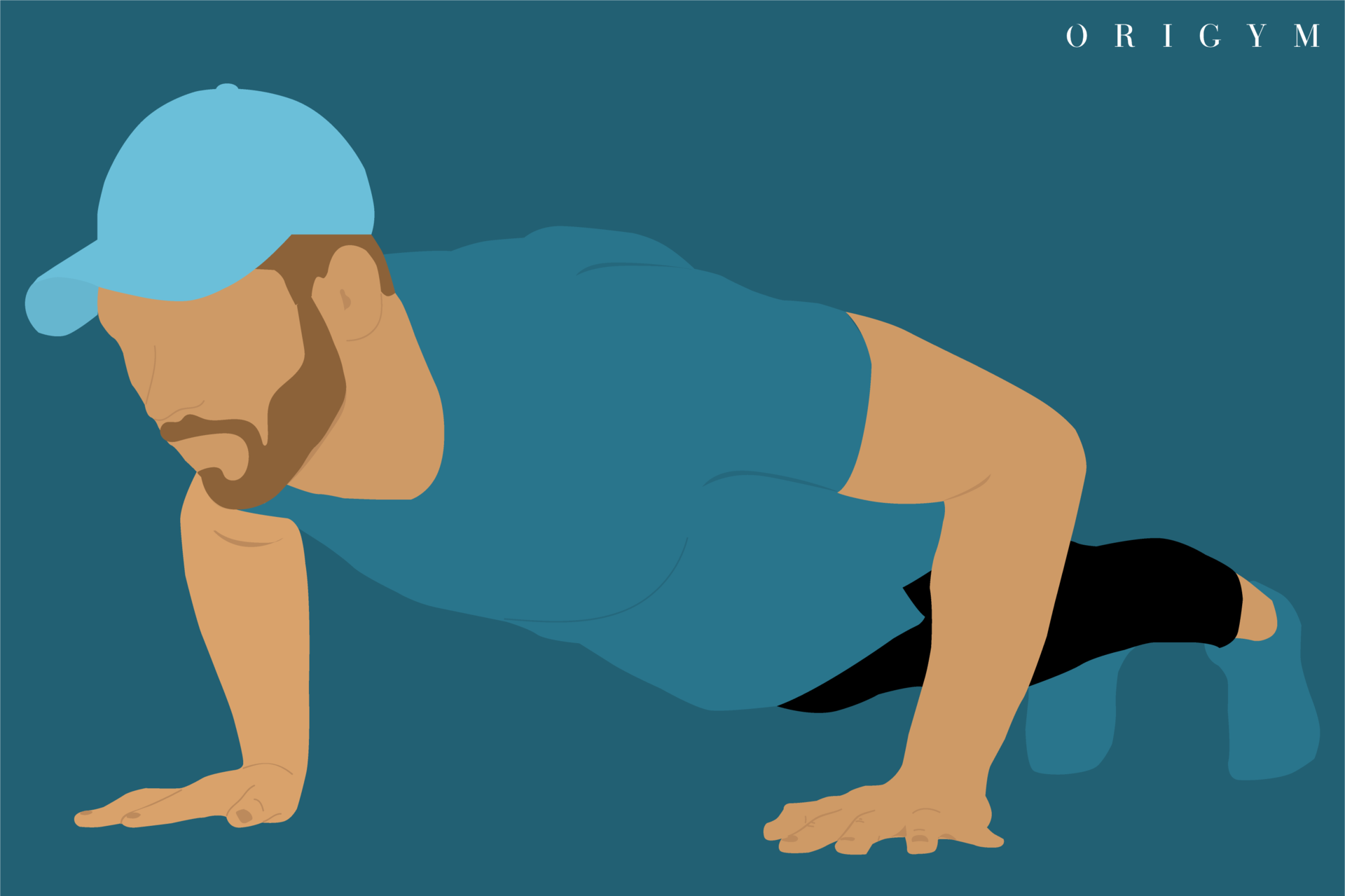
The exercises that we’ve listed here will target multiple upper-body muscle groups at a time, and are great for building muscle mass in the area when they’re performed for hypertrophy rather than strength or endurance.
If it’s a pulling or pushing movement, you should opt for a narrow grip or stance to really engage the triceps and biceps over the other muscles that are used.
We’ll talk about reps & sets for building muscle mass a little later on, but for now let’s take a look at the exercises that should make up your workout plan!
EXERCISE 1: Pull-Ups (Narrow Grip)
While they’re pretty similar to push-ups in the sense that they’re intended to build muscular endurance, they are still a powerful exercise for building muscle mass in the arms and upper body when used alongside a properly optimized weight training program.
If you haven’t been able to perform pull-ups in the past, then you’ll definitely want to give them a go once you’ve been training for a few weeks. Even if you just incorporate them into your routine once per week, they’ll make you feel incredibly strong, and it will be like a mini personal triumph when you can manage 10 at a time.
Or, if you’re experienced in weight training then you can have a go at performing weighted pull-ups, which will certainly help to build muscle mass!
Be sure to use a narrow grip once you’ve mastered the pull-ups, as this will allow you to really target the upper arms.
Equipment:
1 pull-up bar
Starting position:
Start by gripping the pull-up bar with an underhand grip (this will engage the biceps more than an overhand grip would). Keep your shoulders tense and aligned, and be sure not to lock out your elbows (keep your biceps slightly engaged).
Execution:
- While maintaining proper shoulder alignment and keeping your core engaged, pull your chest towards the bar (it may help if you cross your ankles like in the demonstration above)
- Ensure that your back remains neutral throughout the movement, and that you complete the full range of motion (rather than a half rep)
- Slowly lower yourself down into the starting position without locking out your elbows, and repeat!
Muscles worked:
Latissimus dorsi, rhomboids, deltoids, biceps
EXERCISE 2: Tricep Dips
Like with skull crushers, tricep dips are one of the only exercises that can be used to really target the triceps as the main muscles worked. This makes them a great addition to any workouts for bigger arms, especially since there are only so many bicep exercises that you can complete in one session!
Truth be told, the triceps actually make up 60-65% of the arm, so they should never be ignored.
If you’re really looking to learn how to get bigger arms, one of the first things that you should know is that targeting the biceps alone will only get you so far. Training the triceps will help to eradicate any muscular imbalances, as well as helping to build more muscle mass in general.
Equipment:
1 dip station
Starting position:
Start by gripping the bars of the dip station with an overhand grip, and your knuckles facing outwards. Push yourself into the upper position of the exercise, with your elbows locked out, so that you’re prepared for the ‘dip’ phase. You may find it easier to cross your ankles as show in the demonstration above.
Execution:
- Ensure that you’re engaging your core and squeezing your glutes
- In a slow and controlled motion, lower yourself until your elbows are at a 90-degree angle
- Drive yourself back up into the starting position (you should really feel the burn in your triceps)
- Repeat!
Muscles worked:
Triceps, anterior deltoid, rhomboids, pectoralis muscles
Sets:
3-5
Reps:
8-12
If you would like to know about careers in fitness you can learn about the highest-paying fitness careers.
EXERCISE 3: Weighted Bench Dips
As we mentioned above, ignoring the triceps will only mean that your progress will stunt and doing so can even cause imbalances in muscle tissue, leaving you more susceptible to injury.
Luckily, the weighted bench dip is one of the best exercises for bigger arms and targeting the triceps, especially since the weighted element makes it perfect for progressive overloading. If you use this exercise during your bigger arms workout, you’ll be on the road to getting bigger arms in no time!
Equipment:
- 1 weight plate or dumbbell
- 2 weight benches
Starting position:
Set up the benches so that they are parallel to each other. Grip the edge of one of the benches with both hands (with an overhand grip and around shoulder-width apart), and have your heels placed safely on the opposite bench. Ensure that the weight plate or dumbbell is securely balanced in your lap.
Execution:
- With your torso upright and bending at the elbows, lower yourself as far down as you can safely go
- Once you’ve reached the bottom of the movement, drive yourself upwards using your triceps until you reach the starting position (ensure that you don’t lock your elbows fully)
Muscles worked:
Triceps, deltoids, rhomboids, pectorals, latissimus dorsi
Sets:
3-5
Reps:
8-12
EXERCISE 4: Diamond Push-Ups
While it’s not an exercise that uses free weights, the diamond push-up is another of the most popular exercises when it comes to targeting the triceps thanks to the narrow stance.
Plus, one way that it can be modified to accommodate muscle mass growth is with resistance bands.
If you can’t quite manage push-ups yet, or you’re looking to make this kind of push-up more challenging for yourself, check out our video below on how to do diamond push-ups.
Equipment:
1 resistance band (if required)
1 exercise mat
Starting position:
Start in a standard plank position, but rather than your hands being placed underneath your shoulders, move them together so that they form a diamond shape underneath your chest.
Execution:
- Keeping your core braced and your glutes tight, lower yourself towards the mat (your elbows should bend at a 45-degree angle in relation to your body)
- Stop just before your chest touches the floor
- Drive yourself back up into the starting position (you should really feel the burn in your triceps)
- Repeat!
Muscles worked:
Triceps brachii, pectoralis major, deltoids, rectus abdominis, glutes, quadriceps, obliques
Sets:
3-5
Reps:
8-12
Start a Successful Online PT Business From Home in 9 Weeks!
Get started by downloading our video guide
EXERCISE 5: Bent Over Barbell Row
The best way to get big arms fast is to train the upper-body holistically as well as targeting the biceps and triceps alone.
If you only perform curls and dips, then you risk creating muscle tissue imbalances that could mean that you have to take a break from exercising altogether in the event of an injury!
Using the reverse grip bent over row as part of your bigger arms workout will build strength and muscle mass in your back and chest as well as in your arms. This will therefore make it easier for you to grow muscle mass in your upper-body as a whole, and help you to build big arms in the long-run than you would if you targeted the arm muscles alone.
Equipment:
- 1 barbell
- 2 weight plates
Starting position:
Have the barbell on the floor in front of you, your feet around hip-width apart. Have your knees slightly bent and hinge forward at the hips until your upper-body is parallel to the ground. Grip the barbell in an overhand grip and lift it so that it sits just in front of your thighs.
Execution:
- Keeping your core braced and your back neutral, drive the barbell towards your chest
- Do NOT raise your shoulders during this process - use your arms for the entirety of the movement and squeeze your shoulder blades
- Keep your elbows at a 45-degree angle throughout the movement
- Move the barbell back to the starting position (just in front of your thighs, not back to the ground) and repeat!
Muscles worked (upper-body):
Latissimus dorsi, trapezius, rhomboids, posterior deltoids, lower back, biceps
Sets:
3-5
Reps:
8-12
Become a Personal Trainer with OriGym!
EXERCISE 6: Chest Incline Dumbbell Row
This move will target your back for the most part, but is a great exercise for building muscle mass in your upper body when you're learning how to build bigger arms. Your biceps are still involved in the movement, meaning that they’ll still receive benefits through performing it!
It’s a great idea to incorporate chest and back exercises in-between some of the exercises that are viewed as ‘arms exclusive’, as you will build the overall muscle mass of these areas which in turn supports the arms in growth. It also gives your arms an ‘active rest’ in-between exercises while still working your upper body. This is a great move when you're learning how to get bigger arms with dumbbells.
Equipment:
- 1 weight bench
- 2 dumbbells
Starting position:
Set up the weight bench so that it’s at a 45-degree incline, and lie on top of it facing the ground. Have your heels raised and your weight balanced on your toes. You should grip one dumbbell in each hand, and have your arms outstretched towards the ground at shoulder-width apart and parallel to each other.
Execution:
- With your core and glutes engaged (to protect your back), curl the dumbbells towards you with your arms at a 45-degree angle in relation to your back (as you should during a push-up)
- Ensure that you’re driving the bells with your upper arm rather than your forearms, and squeezing your back and biceps at the top of the movement
- Lower the bells back into the starting position, slower than you raised them to maximise muscle engagement
Muscles worked:
Latissimus dorsi, trapezius, rhomboids, biceps
Sets:
3-5
Reps:
8-12
EXERCISE 7: Face Pull
You might be able to build big arms by neglecting shoulder exercises, but we can promise you that your progress will only go so far if you take this approach.
While face pulls don’t necessarily target the biceps or triceps, the best way to get big arms fast is to build upper body muscle mass. Face pulls will definitely assist you with this, and act as a great exercise to perform in-between those that specifically target the arm muscles.
Equipment:
- 1 cable machine (set at face height)
Starting position:
With the cable machine set to face height, grip a rope in each hand and have your knuckles facing inwards and arms outstretched (your elbows locked out). Stand upright with your back in a neutral position.
Execution:
- Ensure that your core is engaged, and pull the ropes towards either side of your head so that they end up in-line with your ears
- Make sure that your chest is up and your shoulders are back at the top of this movement to maximise its effect
- Slowly reverse the movement until your arms are back at the starting point (your chest and shoulders rolling forward again), and then you’ve completed one rep!
Muscles worked:
Deltoids, rhomboids, trapezius
Sets:
3-5
Reps:
8-12
EXERCISE 8: Bench Press
One of the best exercises to incorporate into a bigger arms workout is the bench press, especially since it’s one of the staple moves of weight training.
While it’s primary focus is the chest, it’s a crucial exercise for building strength and muscle mass in the upper body, which will help with your overall body composition as well as improving the hypertrophy of your upper arms.
If you perform a narrow grip bench press, which is the same exercise performed with your hands around a fist-width apart, then you will target your triceps further!
Equipment:
1 barbell
1 weight bench
2 weight plates
Starting position:
Start by lying with your feet flat to the floor, your traps firmly against the bench, and a slight arch in your lower back. Grip the barbell with your hands just over shoulder-width apart in an underhand grip. Have your hands positioned over your elbows at all times.
Execution:
- Whilst engaging your core and glutes, press the bar upwards into the top position, without locking out your elbows (keep a slight bend in your arm)
- Ensure that your traps and glutes stay glued to the bench at all times
- Carefully lower the bar back towards your chest (without it touching your chest)
- Repeat!
Muscles worked:
Pectorals, anterior deltoid, triceps
Sets:
3-5
Reps:
8-12
ISOLATION EXERCISES
Once you’ve gotten used to compound exercises and built up some initial strength and hypertrophy, you can then move onto exercises that train specific muscles in isolation.
These can be tricky at first, so it’s good to start with a lighter set of weights and work your way up through progressive overload rather than going too heavy too fast.
EXERCISE 1: Incline Dumbbell Curl
It’s back to biceps with this exercise!
The main difference between the regular dumbbell curl and the incline dumbbell curl when it comes to building bigger arms is that when the move is performed at an incline, the long head of the biceps brachii is targeted more so than it is during the traditional movement.
If you want to learn how to get bigger arms, a great place to start is with this exercise. When performed alongside other traditional arm exercises as well as those that target the rest of the upper body, you’ll gain muscle mass at a rapid rate.
Equipment:
- 1 weight bench
- 2 dumbbells
Starting position:
Set up the weight bench so that it’s at a 30 to 45-degree angle (whatever feels the most comfortable) and sit with your back facing the bench, and your feet flat on the ground. Grip one dumbbell in each hand with an underhand grip and your arms by your sides (elbows close to your body).
Execution:
- Whilst engaging your core and keeping your back neutral, curl the dumbbells towards your shoulders in a slow and controlled motion
- Ensure that you’re squeezing your biceps at the top of the movement
- Move the dumbbells back towards the starting position at a slower pace than the first phase of the exercise, to really feel the burn
Muscles worked:
Biceps (particularly the long head of the biceps brachii)
Sets:
3-5
Reps:
8-12
EXERCISE 2: Zottman Curl
Invented by the 19th-century strongman George Zottman, this exercise is one of the most well-known in the bodybuilding community for its ability to aid weight lifters in getting bigger arms.
It’s essentially a variation of the bicep curl that uses an overhand grip during the second phase of the exercise. This is great for targeting the forearm muscles in addition to the biceps, as well improving grip strength overtime. If you're learning how to make your arms bigger, you'll want to pay attention to this move!
It’s technically classes as a hybrid compound-isolation exercise, since one phase is more compound, and the second phase (the reverse curl) isolates the brachioradialis.
Equipment:
- 1 pair of dumbbells
- 1 weight bench
Starting position:
Stand upright with your feet around hip-width apart, and your elbows tucked closely to your sides. Hold a dumbbell in each hand with your palms facing outwards (as you would during a regular bicep curl).
Execution:
- Ensuring that your chest is up and your core is embraced, curl the dumbbells towards your shoulders
- Be sure to squeeze your biceps throughout the movement, especially as the bells reach the top
- Once they are level with your shoulders, rotate the dumbbells so that you’re holding them in an overhand grip
- Bring them down into the starting position (slower than you moved them on the way up)
- Rotate the bells back into the underhand grip before the next rep
Muscles worked:
Biceps, wrist extensors, wrist flexors, deltoids, brachialis, brachioradialis (main forearm muscle)
Sets:
3-5
Reps:
8-12
EXERCISE 3: Cross Body Hammer Curl
Many people may be wondering what the difference between hammer curls and bicep curls are, especially due to the fact that they appear to be the same movement at a first glance.
While the traditional bicep curl targets the larger section of the bicep (the biceps brachii), the cross body hammer curl targets the smaller brachialis muscle. The traditional hammer curl targets the brachioradialis, which is mainly in your forearm, so you can perform this also for a well-rounded arms workout!
Equipment:
- 2 dumbbells
Starting position:
Stand upright with your chest up and shoulders back. Grip one dumbbell in each hand (overhand grip), with your hand towards the top of the handle/closest to the weight. Have your arms angled slightly outwards rather than tucked in at your sides.
Execution:
- Keeping your elbow stable, slowly curl one dumbbell up towards your chin in a sideways motion
- Stop when it gets to chest height/your arm is angled at just below 90-degrees
- Bring the dumbbell back down into the starting position in a slow and controlled motion to truly feel the impact on your biceps and forearms
- Repeat with the opposite arm!
Muscles worked:
Biceps brachii (long head and short head), brachialis, brachioradialis (forearm muscle)
Sets:
3-5
Reps:
8-12
EXERCISE 4: Lateral Raise
As we’ve already mentioned, it’s incredibly important to work on the areas around your arms as well as just targeting the triceps and biceps if you really want to learn how to build big arms.
Working on your upper body holistically as well as targeting the arms through specific exercises will mean that you’ll be much less likely to develop any muscle imbalances. This will protect you from any injuries while improving your overall body composition, and help you to build more strength and muscle mass than you would have otherwise.
Equipment:
2 dumbbells
Starting position:
Start with a dumbbell in each hand, using an overhand grip (your knuckles facing outwards) and your arms stretched downwards. Stand with your chest raised and your back straight, and your head facing forwards. Your feet should be around shoulder-width apart.
Execution:
- Keeping your chest high, your core engaged, and your arms straight, lift the dumbbells outwards in a slow and controlled motion until you have them at shoulder level
- You should feel the burn in your lats!
- Slowly bring your arms back down to rest at your sides, as the slower you go the more you will feel the effect of the exercise
- Repeat!
Muscles worked:
Lateral deltoid, asteroid deltoid, posterior deltoid, trapezius, supraspinatus (rotator cuff)
Sets:
3-5
Reps:
8-12
EXERCISE 5: Single Arm Landmine Press
The reason that we went with the single arm landmine press is that it places more strain on the shoulder area as opposed to the chest, which is targeted more through the two-handed version.
By targeting the shoulders, you’ll naturally make your arms bigger as the deltoid muscles are what give the upper arms their rounded shape when significant muscle mass is gained. They’re often ignored by beginners to weight training, but if you avoid this common pitfall then you’ll be making rapid progress compared to those who don’t know any better!
If you want to know more about this exercise, our video on the landmine press is below.
Equipment:
1 barbell
1 landmine holder
Starting position:
Grip the end of the barbell with your left hand in an underhand grip, with your knuckles pointing towards your left. Your elbow should be at around a 45-degree angle in relation to your body. Have your feet around shoulder-width apart, your knees slightly bent, and your back in a neutral position.
Execution:
- While bracing your core (to protect your lower back muscles), drive the weight upwards by extending at your elbow
- Ensure that the weight travels in a straight line, so that it’s consistently in line with your shoulder
- Avoid hyperextending or fully locking out your elbow at the top of the move; you should keep a slight bend in your elbow to prevent injury
- In a slow and controlled motion, bring the barbell back towards your shoulder by reversing the original motion - the slower you go, the more you’ll feel the burn!
- Once you’ve performed one set with your left arm, switch to your right
Muscles worked:
Triceps, deltoids, scapular stabilisers, trapezius, obliques
Sets:
3-5
Reps:
8-10
EXERCISE 6: Skull Crushers
Don’t let the intimidating name put you off. While you should probably start with a significantly lighter weight than the amount you use for other arms exercises, they’re not as scary as they sound, and the effect that they can have on building muscle mass in your triceps is insane.
In fact, there aren’t many exercises that could rival skull crushers when it comes to targeting the triceps, so this exercise is a must for any effective workout for bigger arms.
Equipment:
- 1 weight bench
- 1 barbell
- 2 weight plates
Starting position:
Start by lying flat on your back on the weight bench, with the barbell in the top position (elbows locked out) and your feet flat on the ground. Your wrists should be about shoulder width apart and gripping the barbell in the overhand position.
Execution:
- Keeping your back neutral and your core braced, bring your arms down so that the barbell is just above your head (being incredibly cautious)
- Drive the barbell back upwards, expending the majority of your power at the beginning of the movement (you don’t want to snap your elbows into the locked position too quickly)
- That’s a complete rep!
Muscles worked:
Triceps, shoulder stabilizers
Sets:
3-5
Reps:
8-12
Sets & Reps: Workout Tips for Bigger Arms
If you’ve attempted to learn how to get bigger arms in the past and made little progress, it’s 100% down to 1 of 2 factors. Either your nutrition has been off, or you've been exercising the wrong way.
We covered the nutrition needed for a bigger arms diet earlier on in the article, but now we’re going to give you the simple formula to follow when looking to gain muscle mass in your arms.
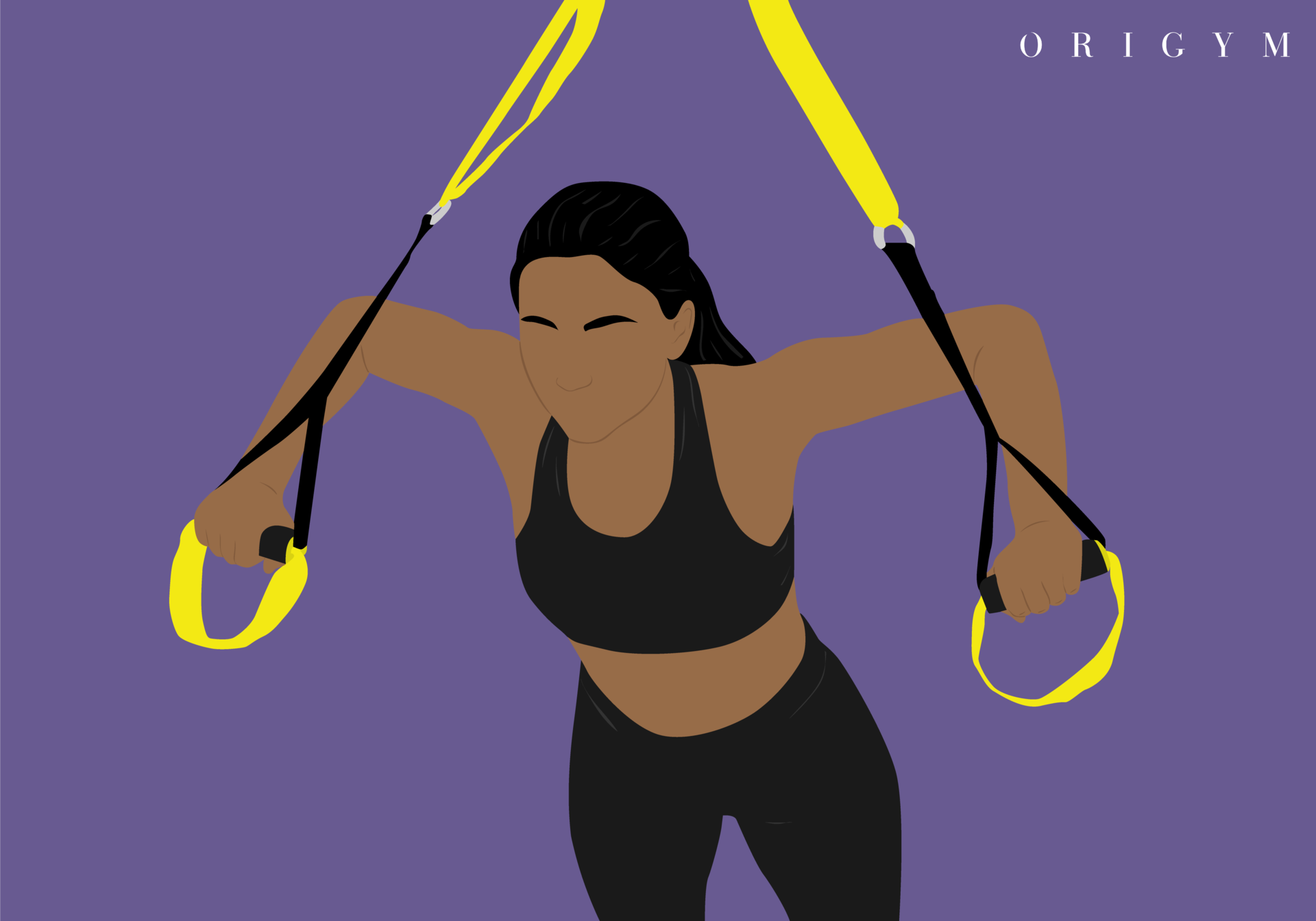
Simply put, if you’re looking to gain muscle mass, then you’re looking to build hypertrophy, which is essentially the same thing. To back this up, take a look at this quote from Tanner Stokes (Department of Kinesiology) et al in their study on the role of dietary protein and resistance exercise in the promotion of muscle hypertrophy:
Resistance exercise potentiates the aminoacidemia-induced rise in MPS that, when repeated over time, results in gradual radial growth of skeletal muscle (i.e., hypertrophy).
It’s clear here that the basic formula for building hypertrophy is a good protein intake alongside a resistance exercise routine that is optimised for hypertrophy.
The problem is that many people confuse certain exercise methods with those that actually help to build muscle. They will perform 100+ push-ups believing that this is better for hypertrophy than say 6 reps with a heavy weight, but this is false.
The Formula for Building Muscle Mass
If you stay within the range of 8-12 reps for 3-5 sets per session, whilst using a heavy weight or resistance, then you’re training for muscle hypertrophy.
However, if you perform any less than 8 reps with an even heavier weight that you’re struggling to manage, then you’re training for strength.
OR, if you’re performing any more than 12 reps with a lighter weight, that you consider to be pretty easy to manage, then you’re training for muscular tone.
It really is that simple, and if you stick to this formula alongside a good diet then you’re fully optimising your programme for a growth in muscle mass!
How to Get Big Arms at Home
When learning how to get bigger arms fast at home, using gym equipment is no doubt the most effective way of doing so.
However, we recognise that not everyone has access to equipment like this, so we’re going to go through the easiest methods that you can follow to get bigger arms at home. If you’re looking for a well-rounded workout that can be performed from the comfort of your own home, then be sure to check out our latest home workout article!
Become a Personal Trainer with OriGym!
- Qualify & start earning in just 2 weeks
- Study full-time, part-time or online
- Endorsed by CIMSPA
#1 - Pull-ups & push-ups
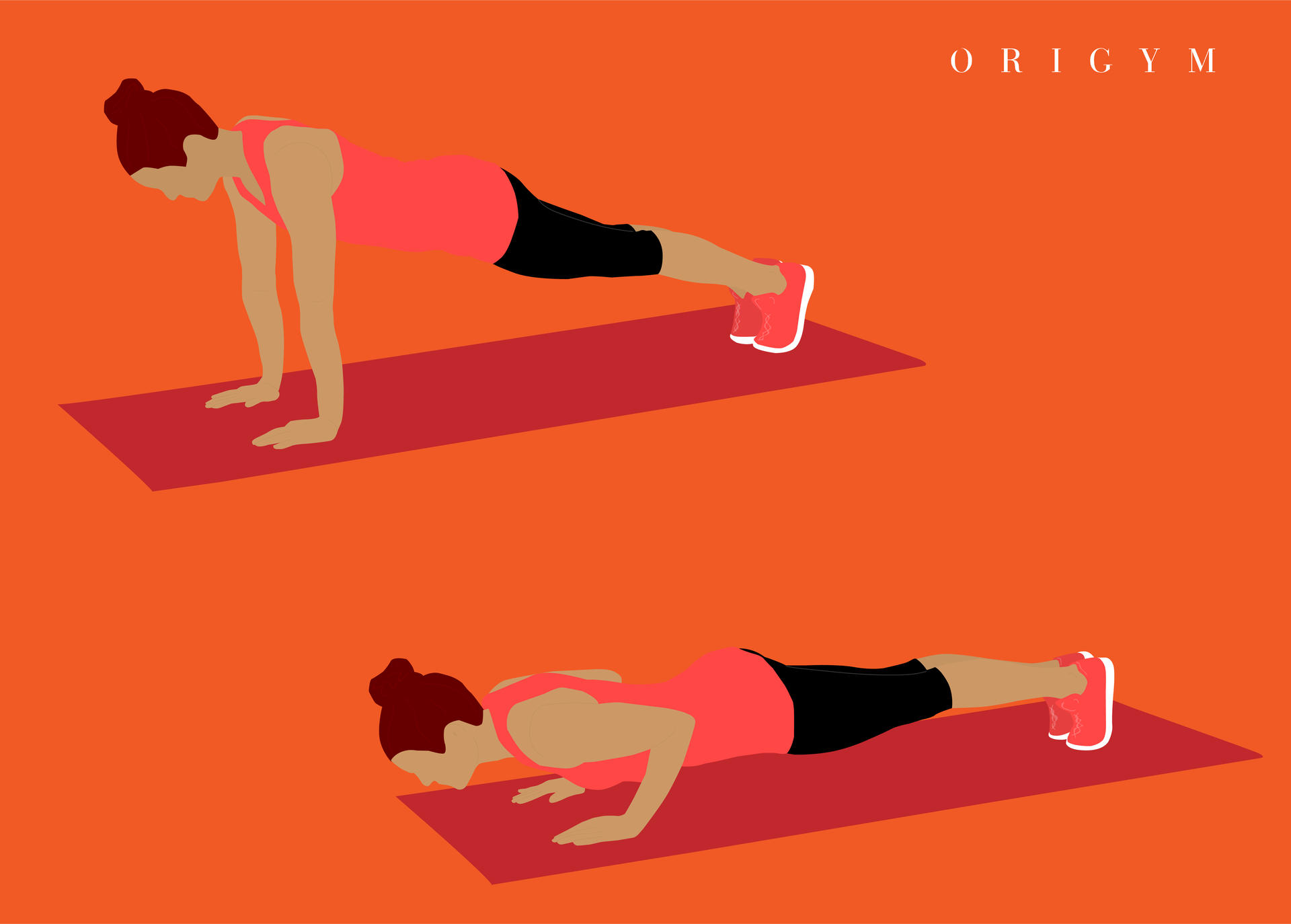
While they’re more aimed at those looking to improve muscular endurance, performing push-ups and pull-ups as part of a bigger arms workout at home (rather than for a long duration) can certainly help you to build muscle mass and tone.
You even have the option to add resistance to both of these exercises using resistance bands, which is a nice alternative to performing them against just your bodyweight when you're learning how to get bigger arms with push-ups.
While your results may be slower by completing mostly bodyweight moves or a calisthenics workout plan, you’ll still gain some muscle mass and tone with these workouts alongside a good nutrition plan, and it can be a good starting point for those considering more weight-based exercises as they progress.
If you don’t already own one, a pull-up bar may help you out here, especially since they can be bought on a budget and easily fitted to your door frames. There are even free standing pull-up bars and power towers listed in the article, which are great if you have the space!
We have also collated a list of the top push-up bars on the market, which are also inexpensive and are great for shifting any discomfort from the wrists during push-ups. Learning how to get bigger arms at home without weights is difficult, but grabbing some budget equipment to aid your workouts is a great start.
#2 - Resistance bands
They’re nowhere near as effective as traditional weights for building muscle mass, but they’re a great piece of equipment if you’re ever unable to get to the gym, or you're learning how to get bigger arms without weights fast. Not just this, but their price tag is ridiculously low for the amount of resistance that they contain!
You can use resistance bands to perform a variety of arm workouts, as well as general upper-body workouts such as bicep curls, tricep extensions, and even cable flys if you purchase a set that comes with handles. They can be attached to door handles and wrapped around bannisters, etc. making them pretty versatile.
If you’re interested in learning about the different types available on the market, check out OriGym's list of resistance bands to compare and contrast products.
We mentioned warming up earlier on as part of our bigger arms workout plan, and while resistance bands can be used on their own for an effective strength workout, they’re perfect for warming up your upper-body muscles before any form of weight training!
#3 - Kettlebells
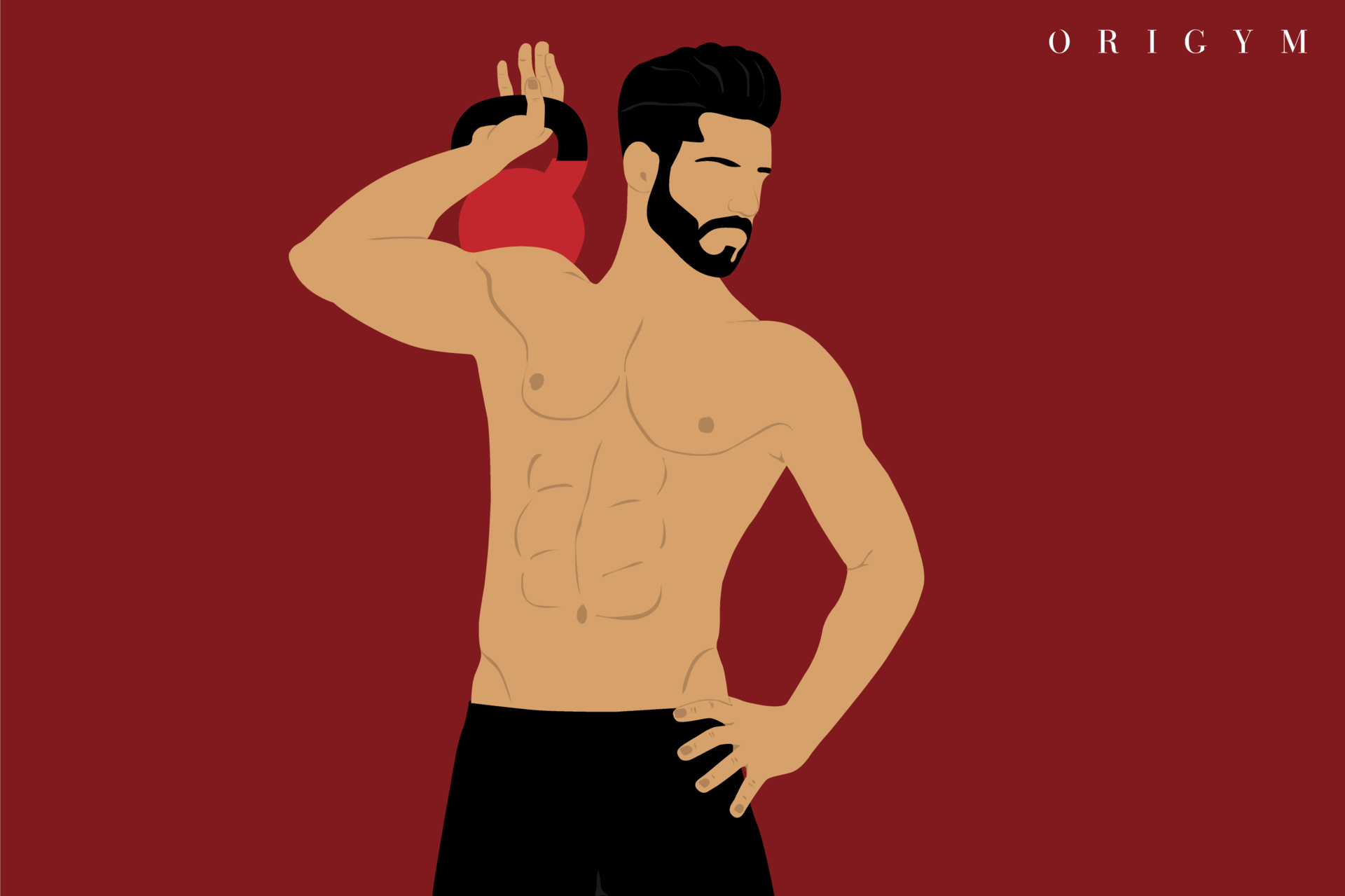
If you’re new to weight training and you’re looking for the best way to get bigger arms for beginners, kettlebells are a great place to start. They’re even advocated by bodybuilders who use them for assistance in gaining muscle tone as well as mass in-between their powerlifting sessions.
One of our favourite exercises to perform with kettlebells to help strengthen the arm muscles is the kettlebell clean and press, which you can view demonstrated below:
Alongside exercises such as this, you can also use kettlebells to perform curls, rows, overhead presses, overhead carries, etc. and movements such as this will be adequate for getting bigger arms if they’re performed with a kettlebell that is heavy in relation to your personal ability.
#4 - Adjustable dumbbells
This is by far the most effective way to get bigger arms at home. While bodyweight workouts are great for your overall health and for building muscle tone and endurance, weighted arms workouts will always triumph them when it comes to building muscle mass.
The great thing about adjustable dumbbells is that they’re perfect for progressive overload, which is essential for building muscle.
If you were to invest in one pair of dumbbells, for example, then you would be paying a high price for something that would help you to progress for a couple of weeks at best.
Once your muscles are developed enough to handle the weight that you’re using, you need to up it to continue to make progress, and this becomes incredibly expensive if you’re buying new dumbbells every couple of weeks.
Adjustable dumbbells are a much cheaper investment than opting for traditional bells, and they’re certainly cheaper than paying for a gym membership each month. They’re our go-to piece of equipment when building a home gym, and probably the first thing that we ourselves would buy!
Armed with a good pair, you will be able to perform exercises such as bicep curls, hammer curls, tricep extensions, lateral raises, shoulder presses, etc. so you won’t have to miss out on any of the staple bigger arms exercises just because you’re working out at home.
Get Bigger Arms at Home: Summary
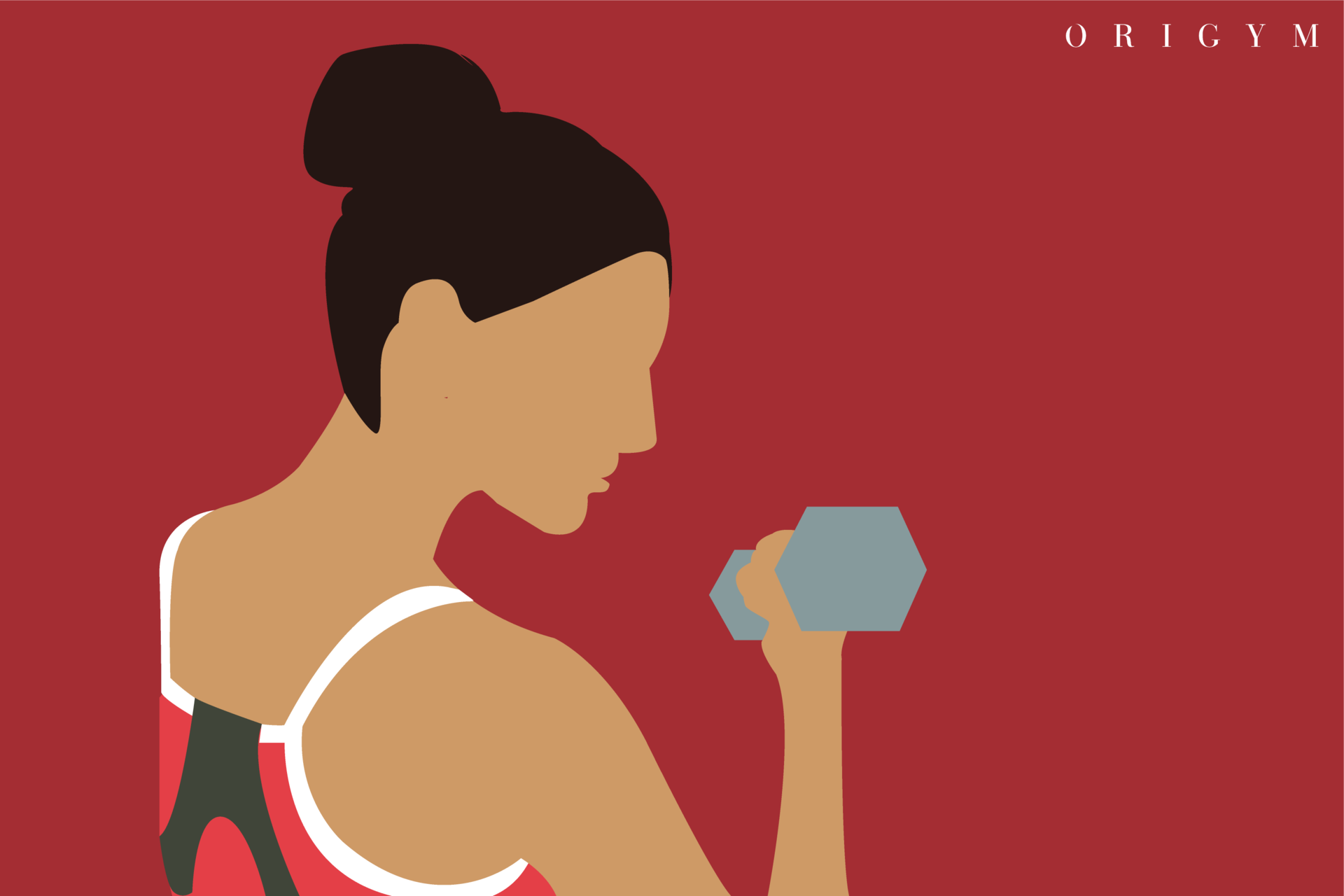
The recurring theme in our section on learning how to get your arms bigger at home is that it’s especially hard to do without the help of free weights.
While we’ve provided the best possible methods and alternative pieces of equipment to use when performing a bigger arms workout at home, if this is one of your main priorities for your current workout programme then we would definitely recommend investing in some adjustable dumbbells (or a rack of dumbbells if you’re able to), and possibly a weight bench to start a truly effective and sustainable workout routine for building bigger arms.
Muscle mass is most easily attainable when you practice good nutrition and implement plenty of variety and progressive overload into your workouts, whether you’re at home or at the gym.
Investing in the right home gym equipment is an actionable way to get started, despite being more expensive than buying one set of dumbbells or a set of resistance bands, but your results will be well worth the price (and certainly cost less than a gym membership in the long-term!).
Conclusion
We hope that you’ve enjoyed our guide on how to get bigger arms quickly, especially since it involves all of the actionable steps that you can start taking today to make a real difference in your body composition and overall fitness.
One tip that we’ll leave here for those intent on getting bigger arms is to remember not to skip leg day!
If you’re interested in becoming a fitness professional yourself, and therefore helping others transform their fitness with the right information, go check out OriGym’s Personal Training Diploma before you go, or download our FREE prospectus for more information!
References:
- Lambert, C.P., Frank, L.L. and Evans, W.J., 2004. Macronutrient considerations for the sport of bodybuilding. Sports Medicine, 34(5), pp.317-327.
- Witard, O., Tipton, K. and Hamilton, D.L., 2017. What’s the best source of protein for building muscle–meat or plants?. The Conversation.
- Baechle, T.R. and Earle, R.W., 2014. Fitness weight training. Human kinetics.
- Stokes, T., Hector, A.J., Morton, R.W., McGlory, C. and Phillips, S.M., 2018. Recent perspectives regarding the role of dietary protein for the promotion of muscle hypertrophy with resistance exercise training. Nutrients, 10(2), p.180.
Start a Successful Online PT Business From Home in 9 Weeks!
Get started by downloading our video guide
Enquire about our Level 4 Nutrition for Sport Course
Become a qualified nutrition advisor!
